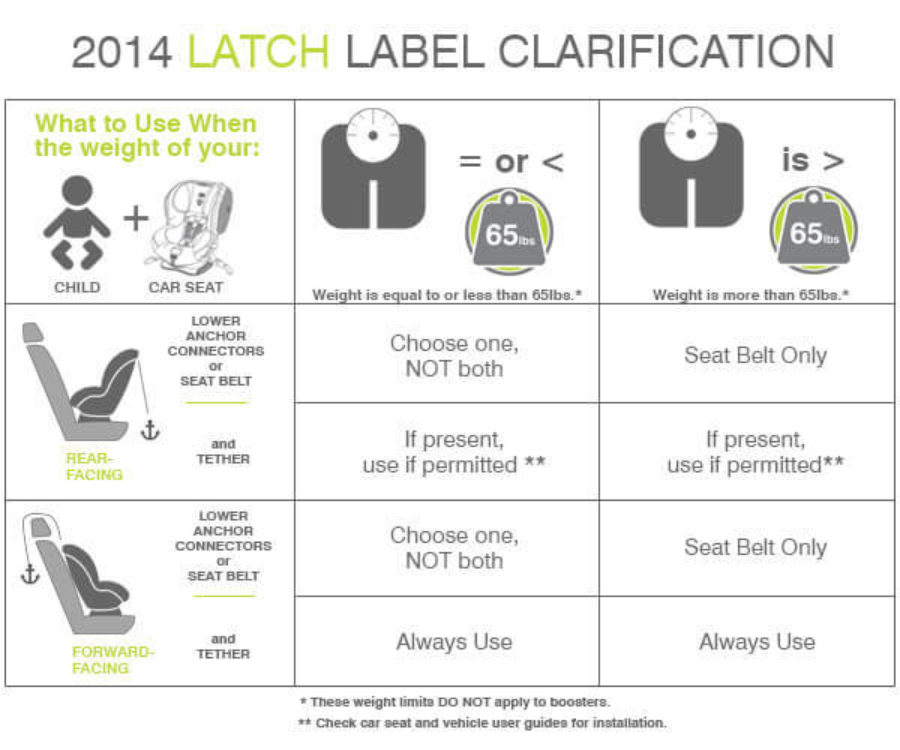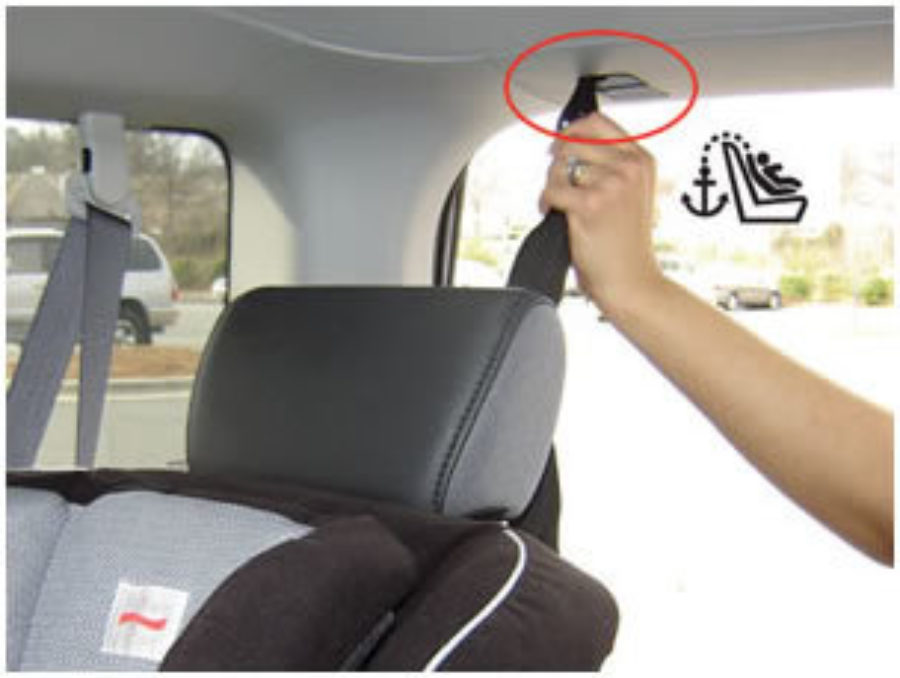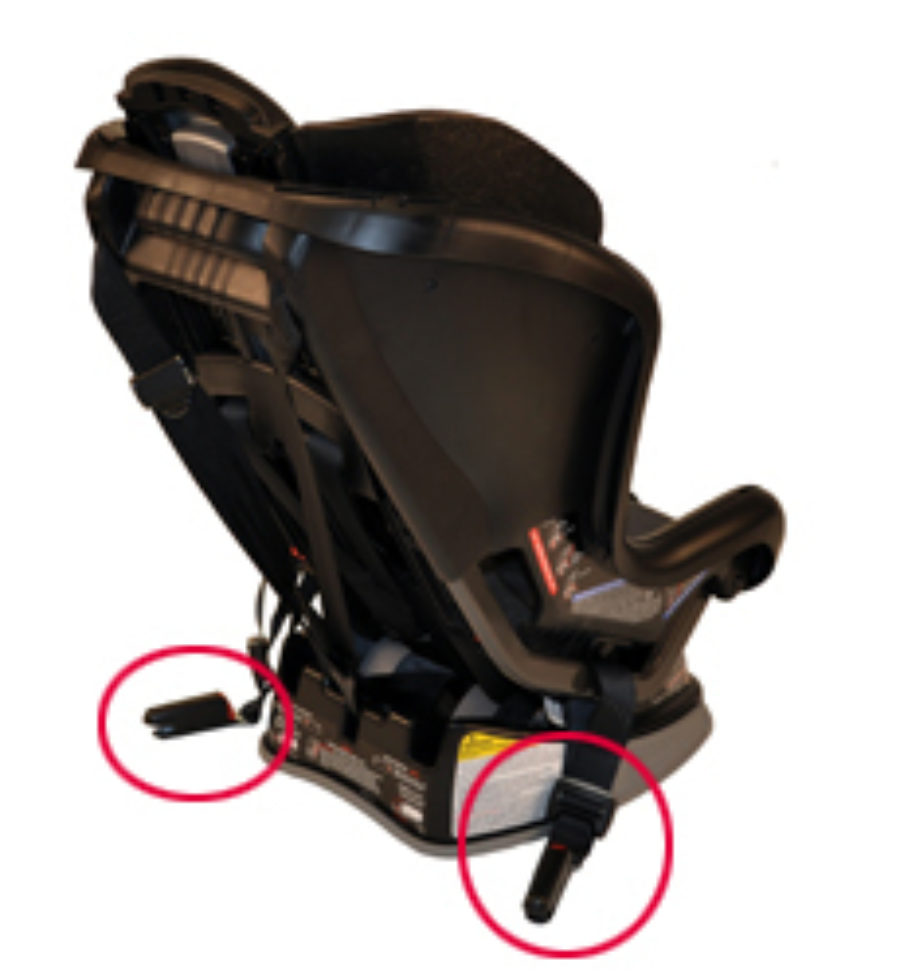Not seeing items you’ve added? Sign in
Safe & Secure
About LATCH


WHAT IS LATCH?
LATCH stands for Lower Anchors and Tethers for Children. As of September 1, 2002, LATCH is available on all car seats and in most vehicles.
However, even in vehicles equipped with LATCH, parents can also secure the child seat using the vehicle seat belt and top tether as permitted by their vehicle manufacturer. Check the vehicle user guide and car seat user guide to determine what is best for your child.
WHERE IS LATCH?
Parts of LATCH in your Vehicle

Lower anchors are the metal bars located in the vehicle seat bight. A car seat's lower anchor connectors are attached to the car seat and allow installation without the use of the vehicle seat belt system. Lower anchors can be either very visible, such as in the vehicle pictured here, or they can be "buried" in the seat bight. Be sure to read your vehicle owner's manual to understand where your lower anchors are located in your particular vehicle.

A tether anchor is the spot in the vehicle where the car seat's tether is connected. The tether on forward-facing car seats and some rear-facing car seats can be attached to the tether anchor in a vehicle. Vehicles typically have three tether anchors. The tether anchor location will vary based on what type of vehicle you drive. The tether anchor could be located on the roof of the vehicle, like the one pictured here. Some are located on the floor, the rear of the seat itself, or on shelf behind the rear seat, such as in sedans. Be sure to read your vehicle owner's manual to understand where your tether anchor locations are in your particular vehicle.
LATCH on your Child’s Car Seat

Lower Anchor Connectors - The lower anchor connectors will be located on the lower part of your car seat. Be sure to read your car seat user guide to understand how your lower anchor LATCH connectors work on your particular seat.

Tether - The tether will be located on the upper part of the back of the car seat. Again, be sure to read your car seat user guide to understand how your tether works on your particular car seat.
The lower anchor connectors on the car seat attach onto the lower anchors in your vehicle. And the tether hooks on the tether anchor in your vehicle. Together they create the LATCH system that can make installation of your car seat easier.
ABOUT LATCH
LATCH has Weight Limits
Before installing a car seat using the LATCH system, it's important to identify the lower anchor connectors and anchor weight limits of both your car seat and your vehicle, and then go by the lowest number. To learn the lower anchor weight limit for your vehicle, you should check your vehicle owner's manual or contact the vehicle manufacturer. Most vehicle lower anchors are not designed to secure more than a combined weight of 65 pounds for both child and car seat. That means if the combined weight of your child and the car seat is more than 65 pounds, then the car seat should be secured using the vehicle's seat belt and tether (as permitted).
Using Lower Anchor Connectors with Booster Seats
Some belt-positioning boosters have lower anchor connectors; the lower anchor connectors help to properly position the booster in your vehicle. The vehicle seat belt restrains your child in a booster seat. In these types of situations, both the lower anchor connectors and vehicle seat belt are used at the same time and the vehicle lower anchor weight limits do not apply.
LATCH Installation Recommendations
BRITAX recommends that parents use the following best practices when installing a car seat using the LATCH system:
- Do not use lower anchor connectors if the combined weight of child and car seat exceed 65 pounds.
- When the combined weight of the child and car seat exceed 65 pounds, use the vehicle seat belt, not lower anchors (in most vehicles), and car seat tether (as permitted).
- If you cannot locate a weight limit for using LATCH in the car seat user guide or vehicle owner's manual, you should install your seat with the vehicle seat belt and car seat tether (as permitted).
- Refer to the vehicle owner's manual and/or car seat user guide to determine if there are weight limits for top tether usage. As permitted, always install the car seat with the car seat tether.
- To determine the best method for installing your car seat: review the car seat user guide and vehicle owner's manual, contact the car seat or vehicle manufacturer as necessary, reference the LATCH anchor weight limits on-line resource or consult with a local Child Passenger Safety Technician (CPST) You can search for your local CPST on www.safekids.org.
National Highway Traffic Safety Administration (NHTSA) Guidelines for Car Seat Installation using LATCH
The National Highway Traffic Safety Administration updated the Federal Motor Vehicle Safety Standard (FMVSS) 213 labeling requirement for car seats in 2014. NHTSA now requires all car seats to include a statement on the warning label and pictogram to indicate maximum child weight for the use of vehicle lower anchors during installation. This simplified reference helps caregivers determine when to discontinue the use of lower anchors and instead use a vehicle seat belt system and tether (if anchor is available) to install a car seat.
Whether you decide to install your seat using LATCH or the vehicle seat belt system and tether, it is important to read both your car seat user guide and vehicle owner's manual prior to installing your car seat. It's also important to understand that you only have to choose ONE installation method; you should not use both the vehicle seat belt system and LATCH to install your harnessed child seat, unless BOTH the vehicle owner’s manual and car seat user guide permit it.
COMMON QUESTIONS
How do the standards implemented by the National Highway Traffic Safety Administration (NHTSA) on Feb. 27, 2014, affect LATCH and car seats?
The new Federal Motor Vehicle Safety Standard (FMVSS) 213 labeling requirement for car seats became effective Feb. 27, 2014. To help clarify these guidelines, NHTSA will require all car seats to include a statement and pictogram to indicate maximum child weight for the use of vehicle lower anchors during installation. The new labeling will provide a simple reference for caregivers to determine when to discontinue the use of lower anchors and instead use a vehicle seat belt system and tether (if anchor is available) to install a car seat.
Do the new labeling requirements also apply to the tether anchors?
No. The label required by NHTSA that indicates maximum child weight for installing a car seat with lower anchors is specific to the vehicle's particular lower anchors. However, anchors. The vehicle owner's manual and car seat user guide should be reviewed for specific direction for tether anchor use. Weight capacity for tether anchor use could be different than for lower anchors, especially when a vehicle seat belt is used to install a car seat.